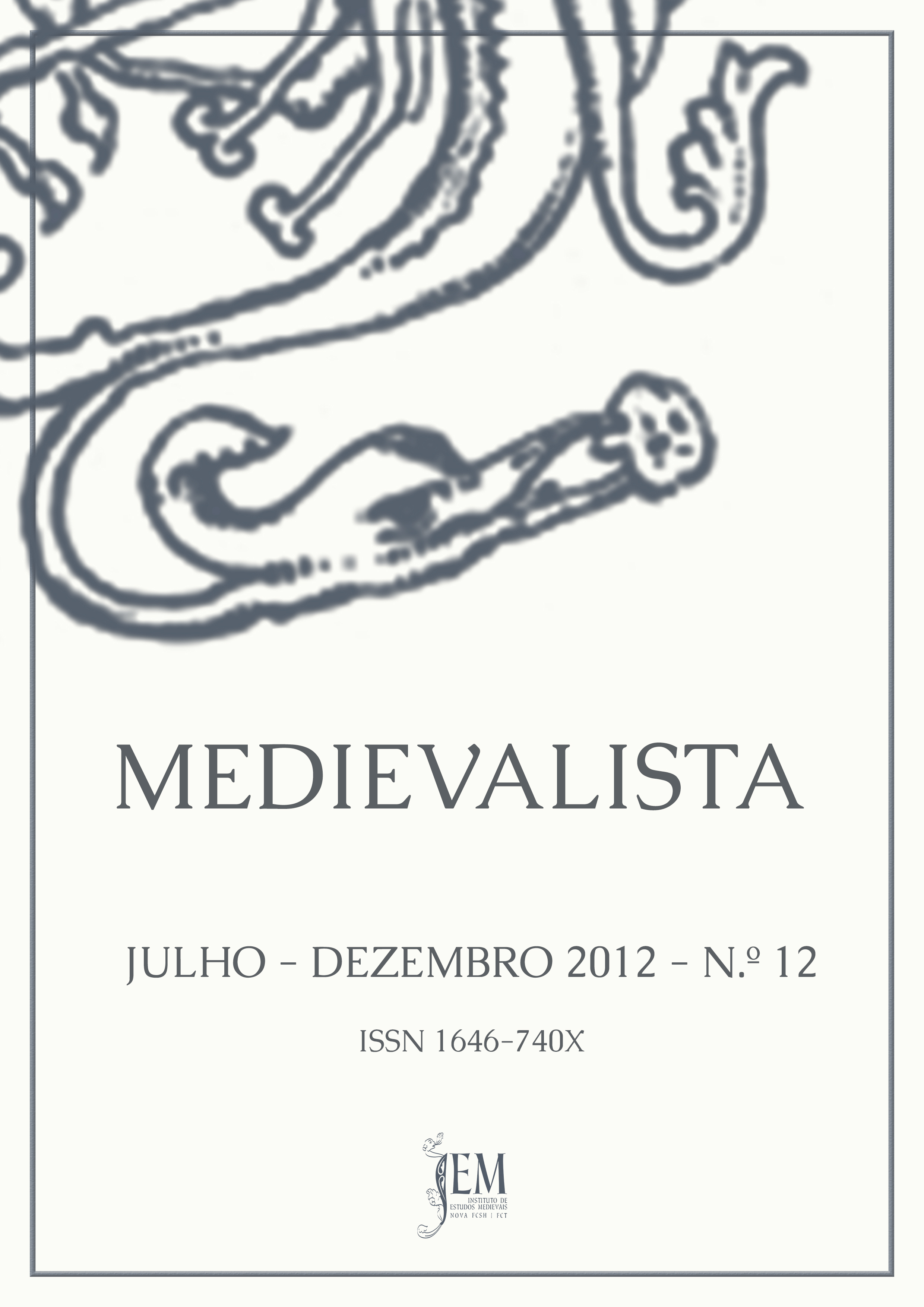O Desvelamento do Mito Arturiano
DOI:
https://doi.org/10.4000/medievalista.648Keywords:
King Arthur, Mith, Literature, Aura, Allegory.Abstract
Attempt for King Arthur’s identity it is something irrelevant and and what it sends to us to enter in a complex universe. To rigour, the literature uses mythological materials like straight source of events and historical characters, in which the history is deformed by popular imagination, where it draws on the myth a profile like concretization of a Utopia, the fact of literary work to be a sort of concrete Utopia keeps alive the hope and the ideal. The literature affects us through the capacity to construct people, a world rises up around the limits of the reason and empirical description. Nevertheless, the myth is dynamic, it is transformed by the time whilst accompanying the spirit of time and the elements that do it a self-knowledge source are configurated in metaphor, depicting the essence of being. So, the mythical King Arthur became timeless and transcended the history. Consequently, the literature does that King Arthur does so that the King Arthur is not a King bequeathed to the past, but a king of the present, because so the measure that rescues the past of a literary work to understand it in the present, unconsciously is resurrected.
Bibliography
BARTHES, Roland. Crítica e verdade. Trad. Leyla Perrone-Moisés, 3 ed. Perspectiva: São Paulo, 2003.
_______________.Mitologias. Trad. Rita Buongermino; Pedro de Souza; Rejane Janowitzer. 2 ed. DIFEL: Rio de Janeiro, 2006.
BAYARD, Jean Pierre. Histórias das lendas. Tradução de Jeanne Marillier. São Paulo: Difusão Européia do Livro, 1957.
BENJAMIN, Walter. Experiências e pobreza. In: ____. Obras escolhidas I: magia e técnica , arte e política; ensaios sobre literatura e história da cultura. Tradução de S. P. Rouanet. Brasiliense: São Paulo, 1985, p. 114-119.
_____________. Origem do drama barroco alemão. Trad., apres. e not. de Sérgio Paulo Rouanet. Brasiliense: São Paulo, 1984.
COSTA, Lígia Militz da. A poética de Aristóteles: Mímese e Verossimilhança. Série Princípios, Ática: São Paulo, 1992.
CAMPBELL, Joseph. Mitos, Sonhos e Religião – nas artes, na filosofia e na vida contemporânea. Tradução de Ângela Lobo de Andrade; Bali Lobo de Andrade. Rio de Janeiro: Ediouro, 2001.
CARROLL, David F. Arturius: a quest for Camelot. Ivory Printers, 1996.
CASSIRRER, Ernst. Linguagem e mito. Trad. J. Guinsburg, Miriam Schnaiderman. Perspectiva: São Paulo, 2006.
DURANT, Gilbert. A imaginação simbólica. Trad. Eliane Fittipaldi Pereira. Cultrix: São Paulo, 1998.
EAGLETON, Terry. “O que é literatura”. In: Teoria da Literatura. Martins Fontes: São Paulo, 1983.
ELIADE, Mircea. Mito e realidade. Trad. Pola Civelli. 6 ed. Perspectiva: São Paulo, 2006.
____________. Imangens e símbolos: ensaios sobre o simbolismo mágico-religioso. Trad. Sonia Cristina Tamer. Martins Fontes: São Paulo, 1991.
ELLIOT. Thomas Stearn. Ensaios. Trad., introd. e not. de Ivan Junqueira. Art Editora: São Paulo, 1989.
KOTHE, Flávio R. A Alegoria. Série Princípios.Ática: São Paulo, 1986
FRYE, Northrop. Anatomia da Crítica. Tradução Péricles Eugênio Ramos. São Paulo: Cultrix, 1973.
GODEL, Robert. Le sources manuscrites du ‘cours de linguistique générale de Ferdinand de Saussure. Genebra/ Paris, Droz/ Minard, 1957). (p. 123).
HAUSER, Arnold. História social da literatura e da arte. São Paulo: Mestre Jou, 1982.
JUNG, Carl Gustave; KERÉNYI, Karl. Essays of Science of Mythology: The Myth of Divine Child and the Mysteries of Eleusis. Tradução: R.F.C. Hull. Princeton University Press, 1949
KOTHE, Flávio R. A alegoria. Série Princípios. Ática: São Paulo, 1986.
LÉVI-STRAUSS, Claude. Mythologiques. 4.vols. Paris, Plon, 1964.
LOPES, Edward. A identidade e a diferença: raízes históricas das teorias estruturais da narrativa. Editora da Universidade de São Paulo: São Paulo, 1997.
MALORY, Thomas Sir. Le morte D’Arthur. Oxford University Press, 1998.
MELETÍNSKY, Eleazar Mosséievitch. Os Arquétipos Literários. Tradução de Aurora Bernardini; Homero Freitas; Arlete Cavalieri. São Paulo: Ateliê Editorial, 1998.
RICOEUR, Paul. História e verdade. Rio de Janeiro. Ed. Forense, 1968.
ROUANET, Sérgio Paulo. Os choques da civilização. Mais!, suplemento: Folha de S. Paulo, 3/out/2004, p. 11-13.
SQUIRE, Charles. The mythology of ancient Britain and Ireland. London, 1909.
____________. Mitos e lendas celtas. Trad. Gilson B. Soares. 3 ed. Editora Nova Era: Rio de Janeiro, 2005.
STAROBINSKI, Jean. Le mots sous le mot: les anagrammes de F. de Saussure. Paris, Gallimard, 1971.
TODOROV, Tzvetan. Théorie de la littérature: textes des formalistes russes. Paris, Seuil, 1965
VICKERY, John B. Literature and Myth. In: Interrelation of literature. New York:MLA,1982, p. 67-89.
Online texts:
http:/ www.legendofkingarthur.com
http://www.mystical-www.co.uk/arthuriana2z/h.htm
The Camelot Project, The University of Rochester, 1995, 1996, 1997. Britannia Magazine LLC

